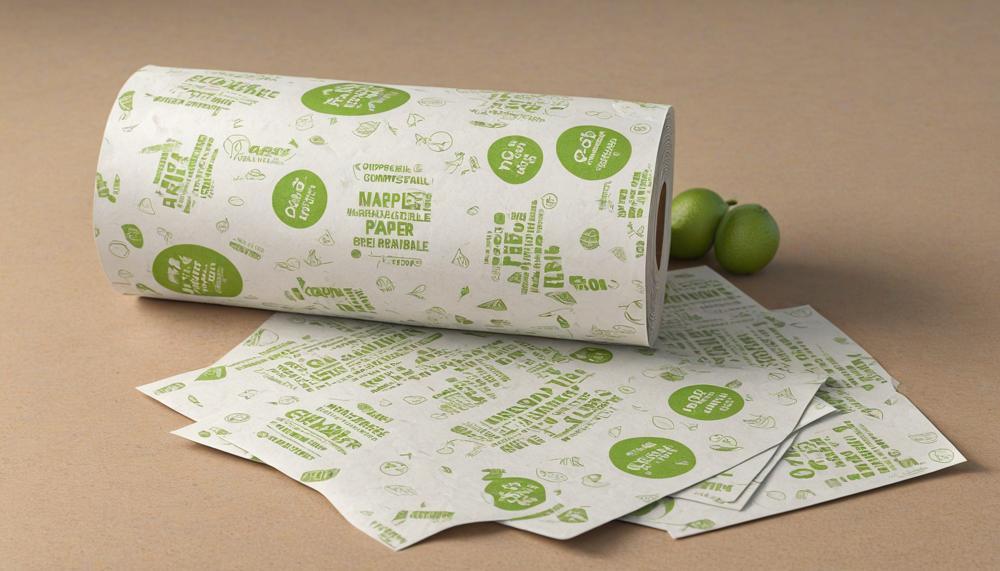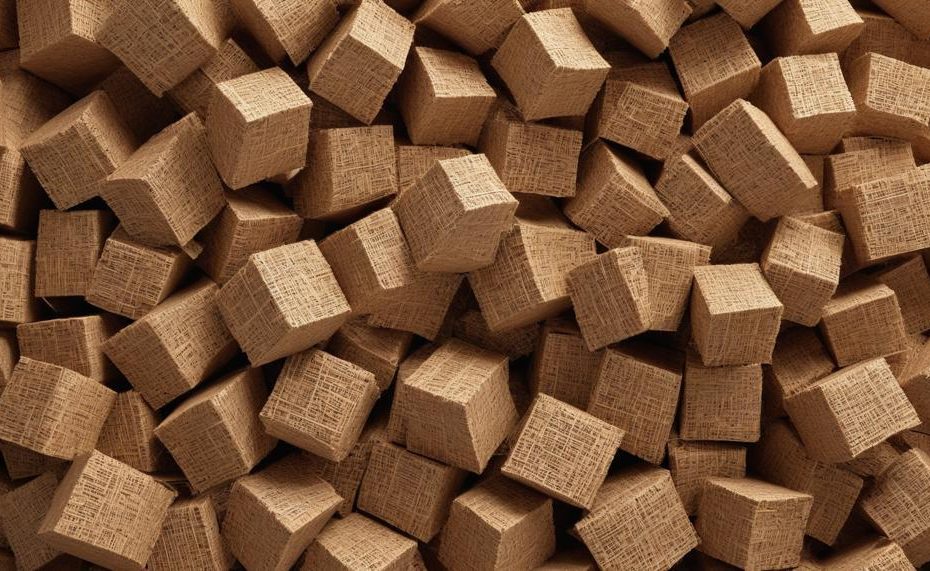Yes, paper is compostable. But there’s a bit more to it. Composting paper can be a great way to recycle and reduce waste, but it’s important to understand the nuances. Here’s what you need to know:
- Plain Paper: Most plain paper, like your everyday printer paper, is compostable. It’s made from plant-based fibers that break down easily.
- Additives and Coatings: Papers with glossy finishes, laminations, or heavy inks can be problematic. These coatings may slow decomposition or leave harmful residues.
- Ink Content: Colored or printed papers might contain toxic substances. Opt for unbleached paper or those printed with soy-based inks for a safer compost pile.
- Composting Method: Industrial composting can handle almost all types of paper quickly due to higher temperatures. Home composting, however, might need some help. Shredding paper can speed up the process.
So, while the answer is a resounding yes for plain paper, it’s essential to be mindful of the type and condition of the paper you’re composting. Read labels, avoid glossy finishes, and your compost pile will thrive. Ready to turn your paper waste into nutrient-rich compost? Let’s dive in.
Contents
- 1 So, you want to compost paper, here’s what you need to know.
- 2 What types of paper can be composted?
- 3 Are paper products biodegradable or compostable?
- 4 Compostable paper from the kitchen
- 5 Compostable paper from the office
- 6 Compostable paper from the bathroom
- 7 How long does it take for paper to decompose?
- 8 Conclusion
So, you want to compost paper, here’s what you need to know.
Compostable Papers
- Unbleached and Uncoated Paper: Ideal for composting. This includes brown paper bags, cardboard, envelopes, notes, and wrapping paper.
- Paper Towels and Napkins: Provided they are free from oils and chemical residues.
- Newspaper and Office Paper: Minimal ink content makes them suitable.
- Paper with Non-toxic Ink: Check for soy-based or vegetable inks.
- Shredded Paper: Speeds up decomposition and balances moisture in the compost pile.
Papers to Avoid
- Glossy or Coated Paper: Magazines, catalogs, and certain cardboards have plastic or wax coatings that resist decomposition.
- Heavily Inked Paper: Avoid papers with heavy dyes or inks to keep your compost organic.
- Synthetic-Coated Papers: Includes items like milk cartons and takeout containers with plastic linings.
- Contaminated Paper: Avoid paper with food residues, oils, or chemicals unless using a Bokashi composting method.
Preparation Tips
- Shred or Tear: Shredding paper helps it break down faster.
- Balance with Green Materials: Mix paper (carbon-rich) with kitchen scraps (nitrogen-rich) to maintain a 25:1 carbon to nitrogen ratio.
- Moisture Management: Keep the pile damp but not soggy to avoid foul odours and pest attraction.
| Compostable Paper | Avoid Composting | Preparation Tips |
| Unbleached and uncoated paper, paper towels, napkins, shredded paper | Glossy magazines, wax-coated cardboard, heavily inked or dyed paper, synthetic-coated papers | Shred paper for faster decomposition, balance with green materials, maintain proper moisture |
| Brown paper bags, envelopes, wrapping paper | Plastic-lined papers, contaminated papers with oils or chemicals | Mix with nitrogen-rich materials like kitchen scraps for optimal composting |
What types of paper can be composted?
Most types of paper can be composted, adding valuable carbon to your compost pile. However, not all paper types are suitable for composting. Here’s a breakdown of what you should and shouldn’t compost:
| Type of Paper | Can be Composted? | Notes |
| Plain White Paper | Yes | Shred into small pieces to accelerate decomposition. |
| Newspaper | Yes | Avoid colored inks; black-and-white pages are best. |
| Cardboard | Yes | Remove any plastic tape or stickers; break into small pieces. |
| Office Paper | Yes | Avoid glossy paper or those with heavy ink coverage. |
| Paper Towels/Napkins | Yes | Compost only if they are free from chemicals and food residues. |
| Glossy Paper | No | Contains coatings that do not break down easily. |
| Colored Paper | No | Dyes and inks may contain harmful chemicals. |
| Plastic-coated Paper | No | The plastic does not decompose and can contaminate compost. |
| Paper with Heavy Inks | No | Inks can contain toxins that are harmful to the composting process. |
Shredding or tearing the paper into small pieces before adding it to your compost pile helps speed up the decomposition process. It’s also essential to balance these “brown” materials with “green” materials, such as kitchen scraps and grass clippings, to maintain a healthy compost pile.
Are paper products biodegradable or compostable?
The short answer is yes, paper products are both biodegradable and compostable. However, there are distinct differences between these two terms when it comes to paper products.
Understanding Biodegradable vs. Compostable Paper Products
| Characteristic | Biodegradable | Compostable |
| Definition | Biodegradable products can break down naturally by microorganisms such as bacteria or fungi into water, carbon dioxide, and biomass. | Compostable products break down into nutrient-rich compost under specific conditions, contributing to soil health. |
| Material Composition | Can include materials like chemical plastics that decompose naturally. | Typically made from plant-based materials and must be free of toxins. |
| Decomposition Process | Occurs naturally without requiring specific conditions. | Requires specific conditions such as temperature, moisture, and human intervention. |
| Disposal | Can be disposed of in a landfill or environment where it will eventually break down. | Must be disposed of in a composting facility or a home compost setup to decompose properly. |
| Impact if Improperly Disposed | May break down more slowly and potentially release harmful substances if made from certain bioplastics. | May not decompose properly and can contaminate regular recycling streams. |
Compostable paper from the kitchen
Types of paper that are considered compostable in the kitchen include:
| Type | Description | Considerations |
| Uncoated Parchment Paper | Made from natural paper fibers, uncoated parchment paper can break down easily in a composting environment. | Ensure the parchment paper is unbleached to avoid any potential chemical residues. |
| Certified Compostable Parchment Paper | This type of parchment paper is designed to break down effectively in industrial composting facilities and is labeled as compostable by reputable environmental organizations. | Look for certifications to ensure the paper is genuinely compostable. Learn more about certifications. |
| Biodegradable Paper Materials | These materials can integrate back into the environment without causing harm, though the degradation process depends on environmental conditions and microorganisms. | Not all biodegradable materials are compostable, so check for compostability to avoid non-degradable remnants. |
Note: While all compostable materials are biodegradable, not all biodegradable materials are necessarily compostable. This distinction is crucial because some biodegradable items may leave behind traces that do not fully decompose.
Avoid:
Silicone-Coated Parchment Paper: The silicone coating is not biodegradable, and while the paper base may degrade, the silicone can persist in the environment.
To manage composting effectively, you might consider tearing paper into small pieces to accelerate the breakdown process. Opting for uncoated parchment paper or certified compostable versions supports sustainable kitchen practices, reducing waste and contributing to a greener future.
Compostable paper from the office
To properly dispose of paper in your office to ensure it is compostable, follow these steps:
Sort the Paper:
- Plain Paper: Ideal for composting. This includes regular office paper, envelopes (without plastic windows), and sticky notes.
- Avoid Contaminated Paper: Steer clear of paper heavily printed with ink, coated with plastic, wax, or other chemicals. These should go in the general waste bin.
- Greasy or Food-Stained Paper: These can be composted as grease won’t hinder the composting process.
Preparation:
- Shred or Tear: Break down the paper into smaller pieces to speed up the composting process.
- Remove Non-Compostable Components: This includes plastic windows from envelopes and staples.
Composting Process:
- Balance with Other Materials: Mix paper with green waste (like fruit and vegetable scraps) to maintain a healthy carbon-to-nitrogen ratio in the compost bin.
- Maintain Moisture: Keep the compost pile moist but not waterlogged. Paper tends to dry out compost, so regular watering may be needed.
- Turn the Pile: Aerate your compost regularly by turning it to speed up decomposition and prevent any bad odors.
Monitor:
- Check for Decomposition: Within a few weeks to months, depending on conditions, your compost should turn into rich, dark soil.
- Adjust as Needed: If the compost smells or seems too wet or dry, adjust by adding more green waste or paper, and water accordingly.
Compostable paper from the bathroom
To properly dispose of paper products from your bathroom in a compostable manner, follow these steps:
Identify Compostable Paper Products:
- Unbleached and recycled paper towels are ideal.
- Avoid bleached or chemically treated paper towels as they may harm compost microorganisms.
Prepare the Paper:
- Ensure paper towels are clean or have only come into contact with ground soil and water.
- Cut or tear paper towels into smaller pieces to speed up decomposition.
Balance the Compost:
- Combine paper towels (brown material) with other browns like cardboard or newspaper.
- Add green materials such as food scraps and grass clippings to maintain a healthy compost balance.
Maintain Moisture:

- Keep the compost pile damp but not soggy. This ensures optimal conditions for decomposition.
Monitor and Turn the Pile:
- Regularly turn the compost pile to maintain aeration and proper temperature, which is crucial for a hot compost method.
Check for Non-Compostable Coatings:
- Ensure paper products do not have non-biodegradable coatings like polyethylene.
Industrial Composting Option:
- If home composting isn’t feasible, contact local industrial composting facilities to see if they accept bathroom paper products.
How long does it take for paper to decompose?
The average time it takes for paper to decompose in a composting environment ranges from two to six weeks. This timeframe can vary based on several factors such as the type of paper and the conditions of the compost pile.
For instance, uncoated paper like newspapers and office paper decompose faster, typically within this range, while paper with non-biodegradable coatings or heavier weights may take longer.
| Type of Paper | Decomposition Time | Notes |
| Newspapers | 2-6 weeks | Decomposes quickly in moist, well-maintained compost. |
| Office Paper | 2-6 weeks | Breaks down efficiently if shredded and mixed well. |
| Cardboard | 2 months or more | Takes longer; best if cut into small pieces. |
| Coated Paper | Varies significantly | Non-biodegradable coatings can hinder decomposition. |
To expedite the decomposition process, it’s essential to:
- Shred or Tear Paper: Smaller pieces break down faster.
- Maintain Moisture: Keep the compost pile damp, not wet.
- Turn the Pile Regularly: This aerates the compost, speeding up decomposition.
- Avoid Non-Biodegradable Coatings: Check paper products for coatings that resist breakdown.
Conclusion
Absolutely, paper is compostable. Embracing this practice not only reduces waste but also enriches soil, transforming your scraps into gardening gold. However, not all paper is created equal when it comes to composting.
Plain paper, such as printer paper and newspapers with minimal ink, breaks down easily thanks to its plant-based fibers. On the flip side, papers with glossy finishes, heavy inks, or synthetic coatings, like magazines and takeout containers, can impede decomposition and may introduce harmful residues.
For successful home composting, shred or tear paper to speed up the process and balance it with nitrogen-rich materials like kitchen scraps. Industrial composting can handle a wider variety of papers due to higher processing temperatures, but for home setups, stick to uncoated, unbleached, and lightly inked papers.
In essence, composting paper is a simple yet impactful way to contribute to a sustainable cycle, turning everyday waste into a nutrient-rich boon for your garden.





